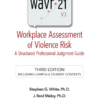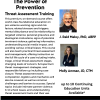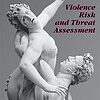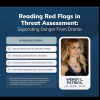Adolescent and Young Adult Mass Murder: Assessment and Management of a Catastrophic Risk
Drawing on recent cases of mass murder, including the Virginia Tech killings in April, 2007, and the Las Vegas Strip Sidewalk killings in September, 2005, Dr. Meloy will present what is currently known about adolescent and young adult mass murder. He will focus on both static (unchanging) and dynamic (changing) variables, drawing clinical and forensic distinctions between the more common predatory mode of violence in such murders, and the rare affective mode of violence in such murders. Similarities and differences between adolescents and young adults who commit such killings will be delineated, including suicidality, pairing, bifurcation, weapons use, paranoia, depression, psychosis, and developing personality disorders. Markers along the pathway toward such violence, including “leakage,” preparation, planning, and third party “concern” will be enumerated. Although mass murder will never be completely prevented, effective risk management techniques have evolved over the past decade. Dr. Meloy will emphasize the use of both threat assessment teams for the noncooperative but apparently dangerous young adult, and more readily available and comprehensive voluntary mental health services for the young adult who is desperate for help and may be at risk for such extreme violence.
Workshop Content
Offender and offense characteristics in adolescent and young adult mass murders
Differences between predatory and affective modes of violence in mass murders and the legal implications of such a distinction
Markers along the pathway toward violence in such known cases
Workshop Objectives
Describe the importance of dynamic vs. static risk factors
Explain the differences between affective and predatory violence
Identify the markers along the pathway to targeted violence
Describe how mental health issues may or may not contribute to violence in this age group






